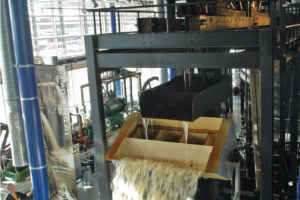From Water Power to Watt
THE ENERGY REVOLUTION OF THE EIGHTEENTH CENTURY
In the seventeenth century, there were no steam engines, no electricity or vehicle fuel from petrol pumps.
Power came from human and animal energy, enhanced by wind and water. Changes in water and steam technology in the late-seventeenth and eighteenth centuries contributed to the Industrial Revolution.
Wind power, as now, was limited by variations in the strength of the wind, making water the preferred reliable source of significant power for regular activity. The Romans developed water wheels and used them for a variety of activities but the first definitive survey of water power in England was in the Doomsday Book c.1086. At that time, well over five-thousand mills were identified – most were the Norse design with a vertical shaft and horizontal disc of blades.
Traditional water mills, with vertical wheels on horizontal shafts, were well established by the eighteenth century. Many were underpass designs where the water flowed under a wheel with paddles being pushed round by the flow. Over time, many mills adopted designs which had buckets, filled with water at various levels from quite low to the very top of the wheel. The power was extracted by the falling of the water from its entry point to where it was discharged.
KEYWORDS: Steam Engine, Steam, Water Power, James Watt, Sarehole Mill, Thomas Savery, Thomas Newcomen
Download the Full Article (PDF)Related Content

The Smethwick Engine - Built to James Watt's Design in 1779
In Watt, Steam Engine, Boulton, Birmingham, Industry, Lunar Society, Enlightenment,

Hidden histories: Boulton & Watt's skilled engineers
In Boulton, Watt, Birmingham, Lunar Society, Soho, Steam, Enlightenment,





